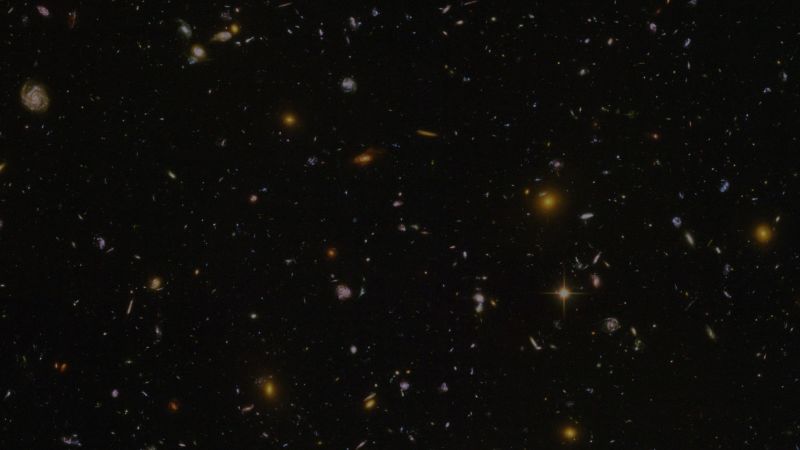Dinkinesh, a small asteroid that NASA’s Lucy mission visited last week, continues to surprise.
Lucy swung by the space rock, located in the main asteroid belt between Mars and Jupiter, on November 1 as part of a test of the spacecraft’s equipment before tackling the mission’s primary goal: surveying the swarms of Trojan asteroids around Jupiter. The flyby of Dinkinesh, which means “marvelous” in the Amharic language of Ethiopia, wasn’t even added to Lucy’s itinerary until January.
But the first views captured by Lucy’s instruments showed there was more to the shadowy asteroid than expected. At first, images suggested that the space rock was part of a binary pair, with a smaller asteroid orbiting Dinkinesh.
However, additional images taken by the spacecraft just after the flyby’s closest approach have now revealed that the smaller asteroid is actually a contact binary — two smaller space rocks that touch each other.
Lucy came within 265 miles (about 425 kilometers) of the asteroid’s surface during its closest approach, which is when the first images were taken. The second batch of images revealing the contact binary, shared by NASA on Tuesday, were taken six minutes later from 1,010 miles (about 1,630 kilometers) away.
“Contact binaries seem to be fairly common in the solar system,” said John Spencer, Lucy deputy project scientist at the Southwest Research Institute, in a statement.
“We haven’t seen many up-close, and we’ve never seen one orbiting another asteroid.
We’d been puzzling over odd variations in Dinkinesh’s brightness that we saw on approach, which gave us a hint that Dinkinesh might have a moon of some sort, but we never suspected anything so bizarre!”
Solving an asteroid enigma
The close approach was primarily designed to help the Lucy spacecraft test its terminal tracking system, which allows the spacecraft to locate the space rock autonomously and keep it within view while flying by at 10,000 miles per hour (4.5 kilometers per second). The system surpassed expectations, which allowed astronomers to make the discovery of Dinkinesh’s unexpected companion.
“It is puzzling, to say the least,” said Hal Levison, principal investigator for Lucy at the Southwest Research Institute, in a statement. “I would have never expected a system that looks like this. In particular, I don’t understand why the two components of the satellite have similar sizes. This is going to be fun for the scientific community to figure out.”
Data from the flyby is still transmitting from the spacecraft to the mission team.
“It’s truly marvelous when nature surprises us with a new puzzle,” said Tom Statler, Lucy program scientist at NASA, in a statement. “Great science pushes us to ask questions that we never knew we needed to ask.”
Setting a course for the Trojans
Lucy’s next close encounter will be with another main belt asteroid called Donaldjohanson in 2025. And then, the spacecraft will set off to see the Trojans.
The Trojan asteroids, which borrow their name from Greek mythology, orbit the sun in two swarms — one that’s ahead of Jupiter, the largest planet in our solar system, and a second one that lags behind it. Too distant to be seen in detail with telescopes, the asteroids will get their close-up when Lucy reaches the Trojans in 2027.
The mission borrows its name from the Lucy fossil, the remains of an ancient human ancestor discovered in Ethiopia in 1974. The skeleton has helped researchers piece together aspects of human evolution, and NASA Lucy team members hope their mission will achieve a similar feat regarding the history of our solar system.
The asteroids are like fossils themselves, representing the leftover material hanging around after the formation of giant planets in our solar system, including Jupiter, Saturn, Uranus and Neptune.

